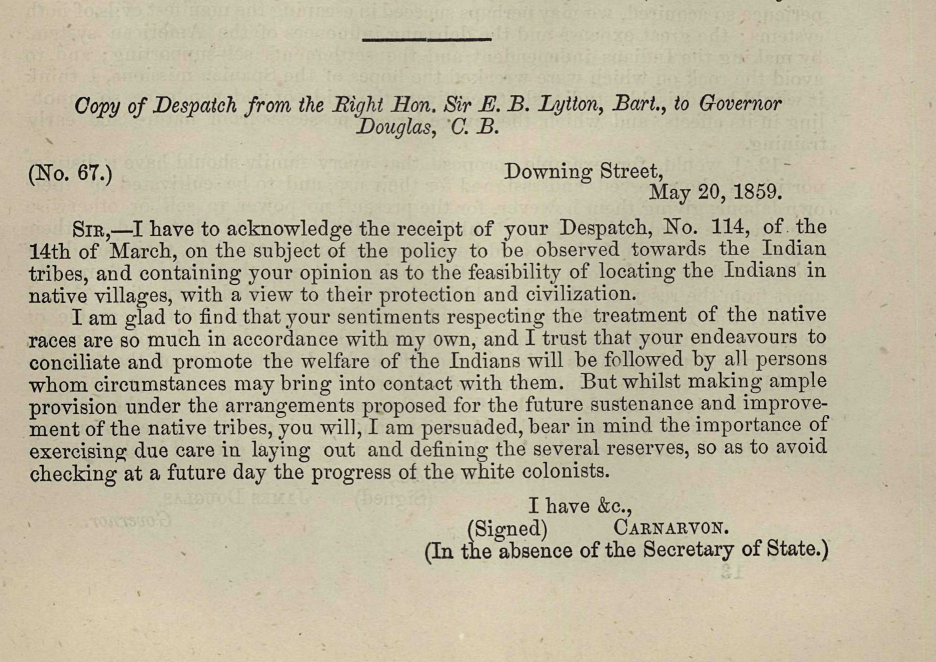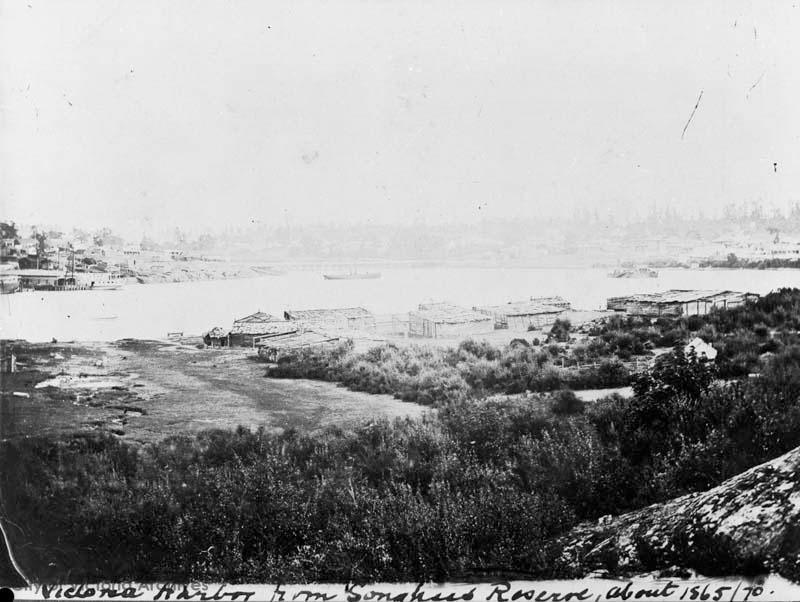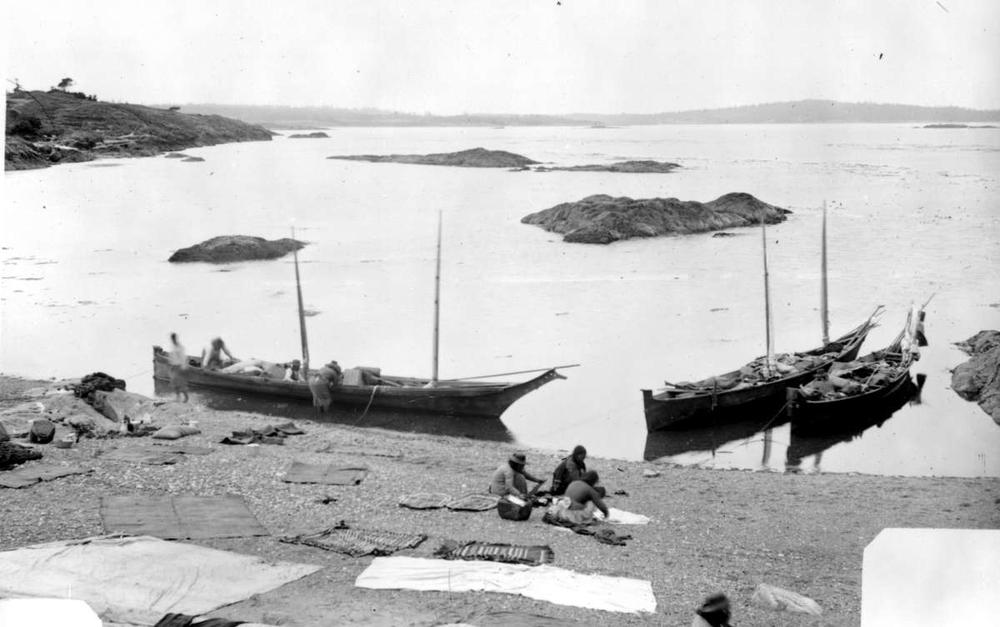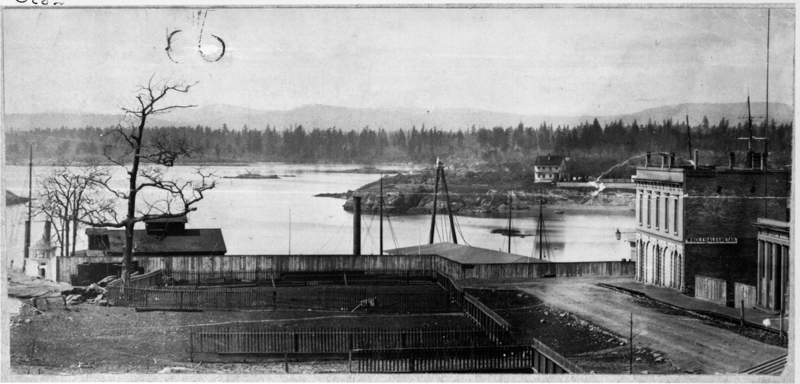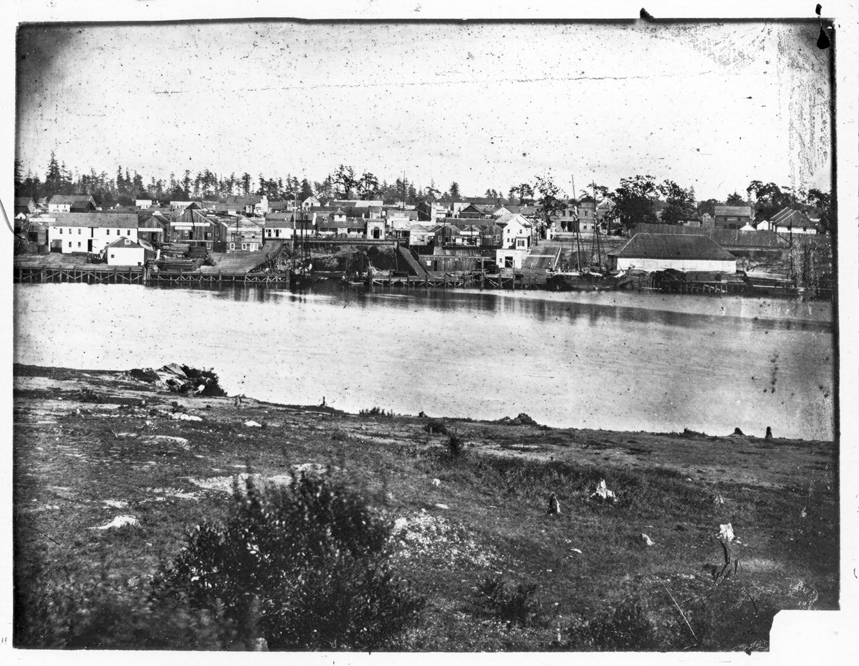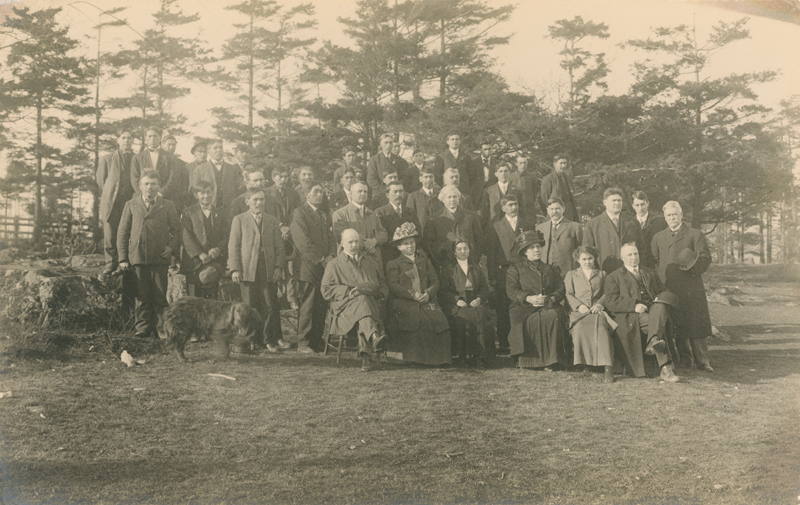It was the practice of Britain to extinguish the proprietary rights of the local Indigenous peoples prior to giving land title to new settlers. On Vancouver Island, this became the task of Hudson's Bay Company (HBC) Chief Factor James Douglas (who became Governor of the Colony in September 1851). Between 1850 and 1854, James Douglas negotiated 14 treaties with several First Nations on Vancouver Island. These came to be known as the Douglas Treaties, which cover approximately 927 square kilometers (358 square miles) of land around Victoria, Saanich, Sooke, Nanaimo, and Port Hardy. The signatories to these treaties are the ancestors of the following present day First Nations: Esquimalt, Songhees, Sc'ianew (Becher Bay), T'Sou-ke, Tsawout, Tsartlip, Pauqhachin, Tseycum, Snuneymuxw, Kwakiutl, Malahat, Nanoose, Namgis, K'ómoks, and Gwa'sala-'Nakwaxda'xw.
These treaties have been successfully relied upon in several modern day court proceedings regarding hunting and fishing rights, and provide the basis of ongoing legal action regarding a village site in the Victoria area.
The Douglas Treaties, along with Treaty 8, which was signed in 1899 between the federal government and Indigenous peoples and included the northeast area of the province, are the only historic treaties in British Columbia. The Nisga'a Treaty, signed in 1998, is the first modern treaty in British Columbia.
The condition of our understanding of this sale is this, that our village sites and enclosed fields are to be kept for our own use, for the use of our children, and for those who may follow after us; and the land shall be properly surveyed hereafter. It is understood, however, that the land itself, with these small exceptions, becomes the entire property of the white people for ever; it is also understood that we are at liberty to hunt over the unoccupied lands, and to carry on our fisheries as formerly.
